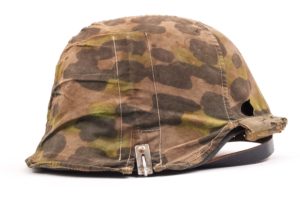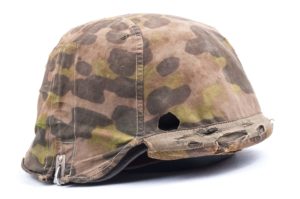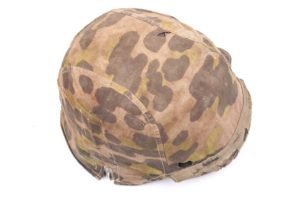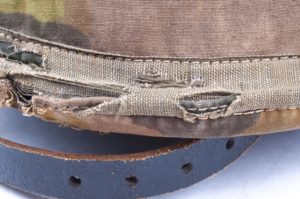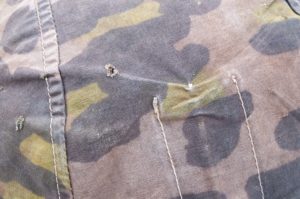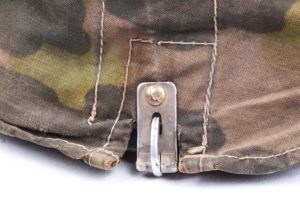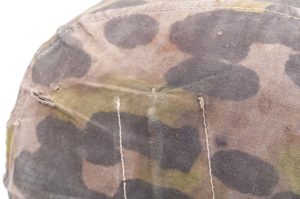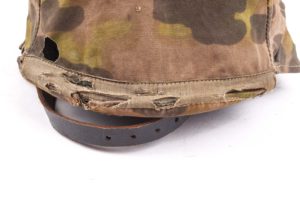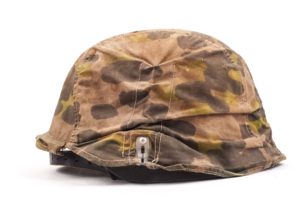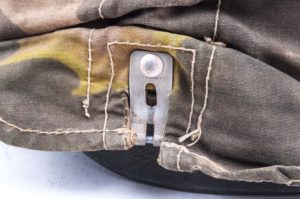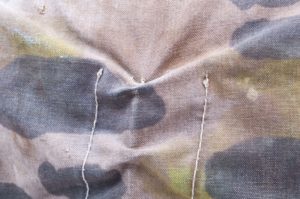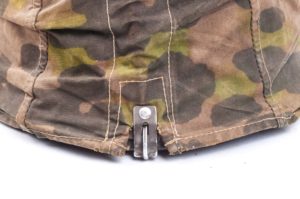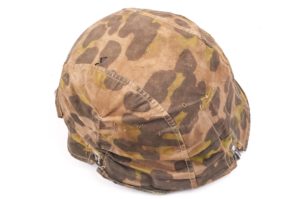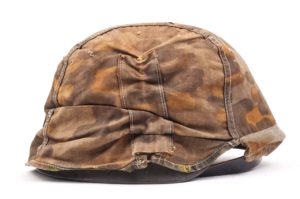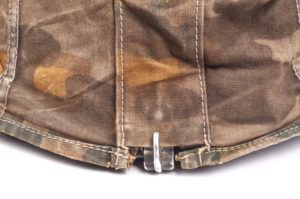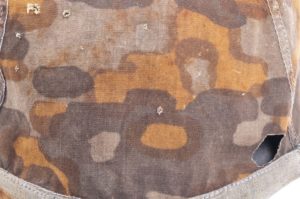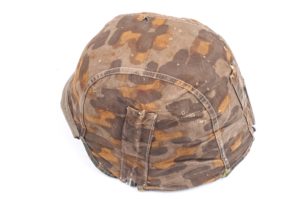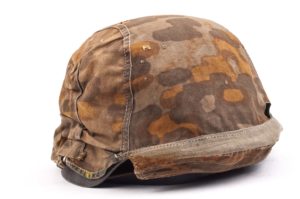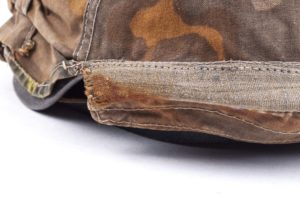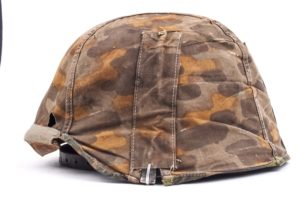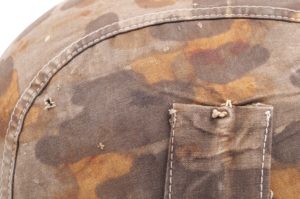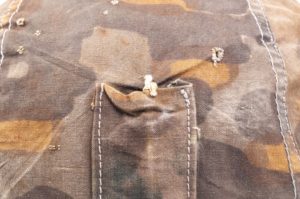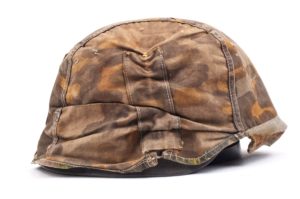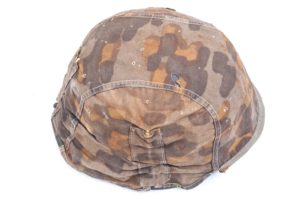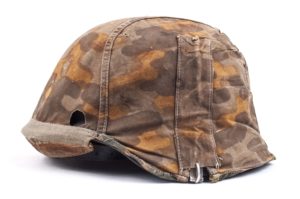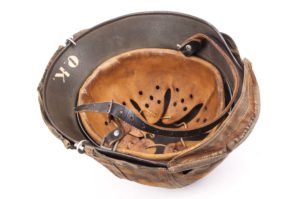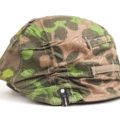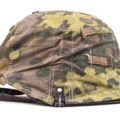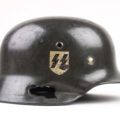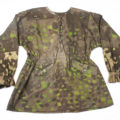Type 1 Helmet cover – Waffen-SS – Lateral Plane tree
Arguably the helmet was the most recognizable part of the individual German soldiers appearance. With a design that derived from the type used in world war one, the German helmet offered more protection then ones used by it’s enemies. The quality field gray painted steel helmet with two decals and rolled steel rim and leather liner was a labor intensive product and simplified as the war progressed. The earliest model helmet used in world war two was the model 35 or M35 Stahlhelm. During the war the helmet was simplified in 2 stages. In 1940 the airvents changed from separate rivets affixed to the helmet shell to stamped in the main body of the shell. In 1942 a new model was introduced where the rim of the shell was left sharp and not rolled over as previous models. These models are known in the collector community as M40 and M42. The low sides that protect the neck and ears, the tell tale design that the Germans introduced in 1935 can still be seen in modern day army helmets.
Model: Type 1 Waffen-SS camouflage cover without foliage loops Lateral plane tree Tarnbezug or helmet cover
Markings: –
Maker: –
Size: Photographed on a shell sized 64
Hooks: Anodized aluminum
Notes: “Lateral Plane Tree” The first camouflage pattern to go into mass-production, this pattern was based directly off of the same art as the block pattern with a softer, less-jagged appearance. Implemented in 1938, this pattern was intended for use as smocks and helmet covers only. Because of the very short repeat (only 32″ tall which is the height of a smock) this pattern was not intended for use as zelts. While the smocks were, for the most part, only seen during the early campaigns in the west, the pattern is actually extremely common throughout the war in the form of helmet covers and m42 caps. Fully hand-screened using three colors.



